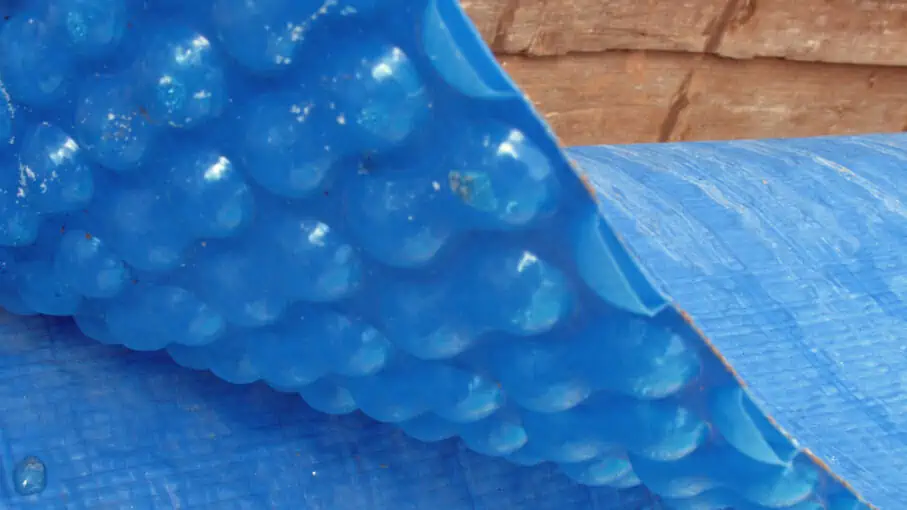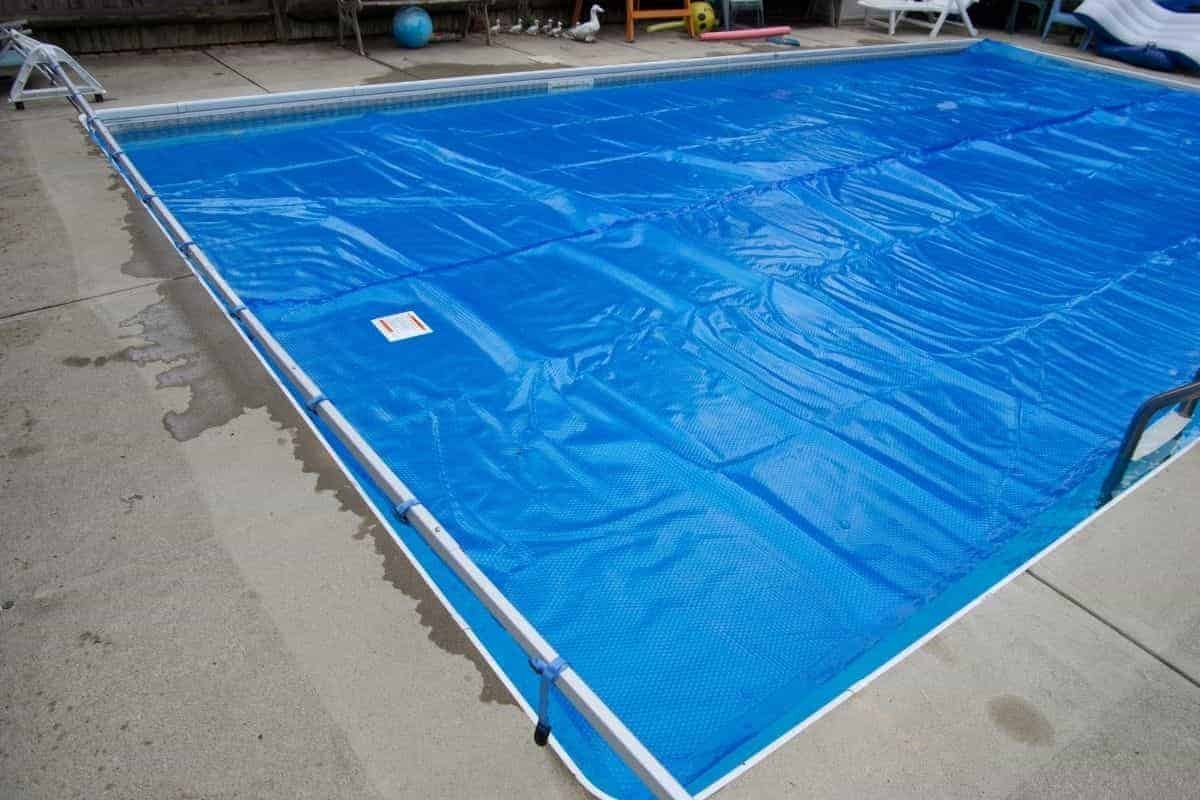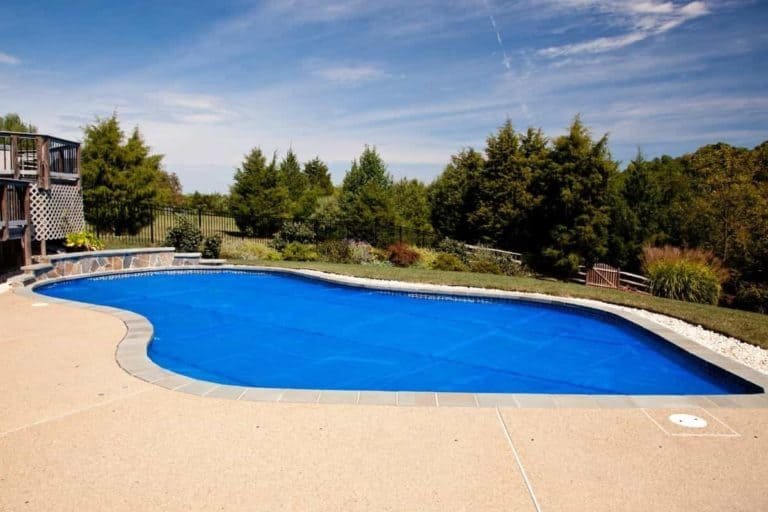
Solar Pool Cover Bubbles Up or Down How to Install Home, Tech & DIY
However, the correct answer is to install the cover with the bubbles down. Why Solar Pool Cover Bubbles Up Or Down Matters. With bubbles down, you will achieve a slightly better insulation property than if you were to install with the bubbles up. This is due to the additional air trapped on the underside of the cover between the bubbles.

Should Your Solar Pool Cover's Bubbles Be Up or Down?
Solar pool covers harness the power of the sun to help heat your pool. The cover looks similar to bubble wrap, and the tiny bubbles work together to collect and retain heat from the sun's rays. The heat is then delivered to the water, effectively heating your pool.

Solar Pool Cover Bubbles Up or Down? Answered Helius Energy
As the sun shines on the solar pool cover, the air trapped in the bubbles slowly heats up. In turn, that heat is transferred to your water, warming up the water for your comfort. However, this process is only possible if the bubbles are facing the water. If the bubbles are facing upward and away from the water, the bubbles will continue soaking.

Solar Pool Cover Bubbles Up Or Down? Backyard Assist
The bubbles on a solar pool cover should always face down, towards the water. Here's why: Heat Transfer: The design of the bubbles is such that they capture heat from the sun and directly transfer it to the water. When the bubbles face the water, this heat transfer is more efficient. Insulation: With the bubbles facing down, the cover.

Installing Pool Cover Solar Pool Covers Bubbles Up Or Down
Pick up one end of the pool cover. Then, ask for help from another person to raise the opposite side of the cover. Fold the solar pool cover over itself by three to four-foot sections. Continue turning the blanket over until you get hold of its opposite end. Next, bring the folded solar cover to the pool deck.

Solar Pool Covers 19 Things to Know Before You Buy
Believe me when I say the direction of the bubbles makes a significant difference. By ensuring the bubbles face down, you allow the cover to efficiently heat your pool. Depending on the amount of direct sun exposure, a solar cover can raise your water temperature by up to 10-15 degrees.

Solar Cover Bubbles Up Or Down?
The solar pool cover first absorbs sunlight, heating up the air bubbles on the surface of the cover. The heat from the bubbles heats the pool water, raising it by anywhere from 10-15 degrees (Fahrenheit). That temperature increase is enough to extend your swim season by a few weeks to a full month! Detailed Answer. The bubbles cause the cover.

Solar pool cover bubbles up or down Artofit
Buying cheap can be a false economy. Some of the best solar pool covers are available from Sun2Solar. They produce them in all shapes, sizes and colors. Sun2Solar Rectangular - from 10ft x 16ft to 30ft x 60ft. Sun2Solar Round - from 12ft to 33ft diameter. Sun2Solar Oval - from 10ft x 15ft to 21ft x 41ft.

Solar Cover Bubbles Up Or Down?
Solar pool cover bubbles should face down for optimal heat transfer and UV protection. To store your pool blanket, ensure it's clean, dry, and rolled, not folded; store in a shaded, temperature-stable area. Maintenance involves regular cleaning, monitoring chlorine and UV levels, and ensuring bubble-side is downward.

Solar Pool Cover Bubbles Up or Down? Answered Helius Hub
Bubbles Facing Up. If you install your cover with its bubbles facing up, the process of warming your pool will take longer and the sun might even destroy the bubbles. The reason behind this is that the bubbles are not facing your pool's water directly. They can easily overheat from the sun's rays since they don't have a place to take the.

Solar Pool Cover Bubbles Up or Down? Pool Research
The science behind the bubbles-down approach of solar pool covers, particularly "Solar Pool Cover Bubbles Up or Down," is a clever application of heat transfer and insulation principles. The bubbles on the cover capture and focus thermal energy, transferring it to the pool through conduction when they directly contact the water.

Installing Pool Cover Solar Pool Covers Bubbles Up Or Down Joule X
3 Solar Pool Cover Orientation: Bubbles Up or Down? 3.1 Bubbles Up: The Recommended Method. 3.1.1 Optimizing Heat Retention and Efficiency; 3.2 Bubbles Down: Exploring the Alternative Approach. 3.2.1 Considerations and Trade-Offs; 4 Factors Affecting Solar Pool Cover Performance. 4.1 Pool Cover Bubbles: Size and Thickness; 4.2 Sun Exposure and.

Solar Cover Bubbles Up or Down Guide for Optimal Usage
The straight answer is, Solar pool cover bubbles should always face down. Solar pool cover works by heating up the air trapped inside the bubbles using direct sunlight. The trapped heat in the bubble is then transferred to the pool water; heating it up. Therefore, it only makes sense for the solar pool cover bubbles to be directly in contact.

The Surprising Answer Solar Cover Bubbles Up or Down? April 2023
The bubbles on your solar pool cover should face down. In other words, the bubbles should be touching your water. The air bubbles trap heat and transfer it to the water, warming your pool. If you place the smooth side facing down, it can decrease its lifespan and your pool will not be any warmer in the meantime.

Solar Cover Bubbles Up Or Down?
The bubbles on your solar cover are what trap the heat and UV rays, warming the swimming pool. Your solar pool cover's bubbles should be down because the bubbles absorb and hold the sun's heat on the water. The bubbles need to be sprayed weekly to remove dried chlorine and other chemicals. Replace the solar cover once the bubbles flake or.

Solar Cover Bubbles Up Or Down
The solar pool cover bubbles should face down toward the water when installed. This allows the bubbles to trap and retain heat from the sun's rays within the pool water, creating a greenhouse effect that can raise your pool's temperature by up to 15°F.. In this article, we will explore the reasoning behind why the bubbles on your solar pool cover should always face down toward the water.